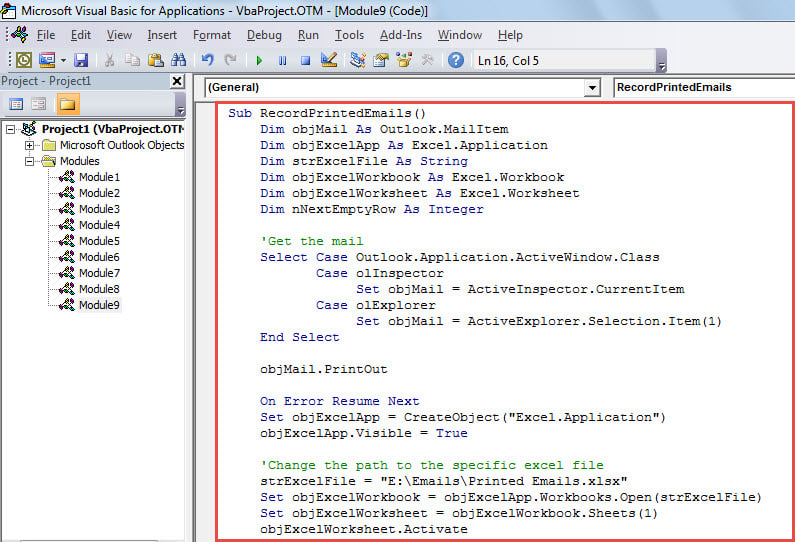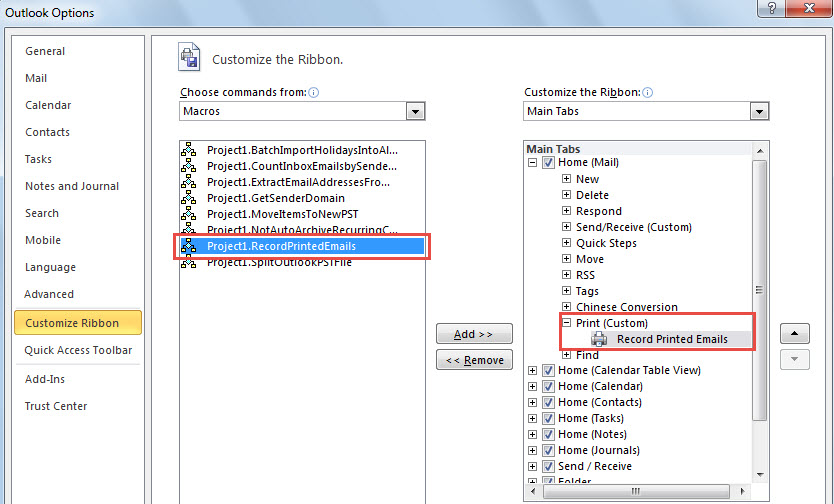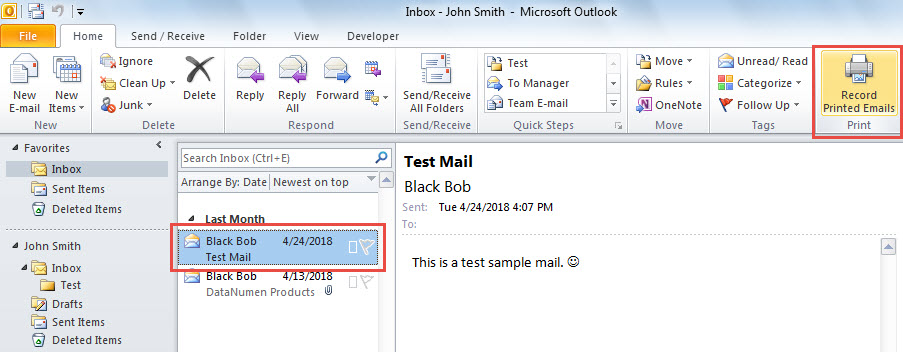Some users hope to auto save logs of printed emails in their Outlook. However, there is not such a direct feature available. Hence, in this article, we’ll introduce a way to auto log each printed email in a specific Excel workbook.
For some reasons, you may need to record the information of an email when you print it. Obviously, Outlook doesn’t provide a native feature supporting this. Thus, in general, you have to manually accomplish this task. Nevertheless, with the help of VBA code, you still can let your Outlook undertake this mission with ease. Now, here we will uncover such a piece of VBA code and detailed steps to you.
Auto Log Each Printed Email in Excel Workbook
- For a start, launch Outlook application.
- Then, access VBA editor via clicking the “Visual Basic” button on “Developer” tab.
- Next, put the following VBA code into an unused module.
Sub RecordPrintedEmails()
Dim objMail As Outlook.MailItem
Dim objExcelApp As Excel.Application
Dim strExcelFile As String
Dim objExcelWorkbook As Excel.Workbook
Dim objExcelWorksheet As Excel.Worksheet
Dim nNextEmptyRow As Integer
'Get the mail
Select Case Outlook.Application.ActiveWindow.Class
Case olInspector
Set objMail = ActiveInspector.CurrentItem
Case olExplorer
Set objMail = ActiveExplorer.Selection.Item(1)
End Select
objMail.PrintOut
On Error Resume Next
Set objExcelApp = CreateObject("Excel.Application")
objExcelApp.Visible = True
'Change the path to the specific excel file
strExcelFile = "E:\Emails\Printed Emails.xlsx"
Set objExcelWorkbook = objExcelApp.Workbooks.Open(strExcelFile)
Set objExcelWorksheet = objExcelWorkbook.Sheets(1)
objExcelWorksheet.Activate
nNextEmptyRow = objExcelWorksheet.Range("A" & objExcelWorksheet.Rows.Count).End(xlUp).Row + 1
'Change the details as per your own case
With objExcelWorksheet
.Cells(nNextEmptyRow, 1) = Date
.Cells(nNextEmptyRow, 2) = objMail.Subject
.Cells(nNextEmptyRow, 3) = objMail.Sender
.Cells(nNextEmptyRow, 4) = objMail.SentOn
.Cells(nNextEmptyRow, 5) = objMail.Size
.Cells(nNextEmptyRow, 6) = objMail.Attachments.Count
.Columns("A:E").AutoFit
End With
objExcelWorkbook.Close True
objExcelApp.Quit
End Sub
- After that, exit the VBA editor.
- Subsequently, according to the “Optional Step” in the post “How to Run VBA Code in Your Outlook“, add this macro to the ribbon or Quick Access Toolbar.
- Since then, every time when you want to print an email, remember to utilize the newly added macro button instead of the standard “Print”.
- In this way, Outlook will auto log the printed mail in the predefined Excel worksheet.
Keep Outlook File Accessible
At times, after Outlook crashes, you may receive the error prompting that the PST file is inaccessible. At that time, you should calm down and then make use of the inbox repair tool to fix Outlook. However, the inbuilt utility is not versatile. It can fail, too. Hence, if your PST file is still unavailable after Scanpst repair, your last resort is a more effective and reliable external tool, such as DataNumen Outlook Repair.
Author Introduction:
Shirley Zhang is a data recovery expert in DataNumen, Inc., which is the world leader in data recovery technologies, including mdf recovery and outlook repair software products. For more information visit www.datanumen.com



